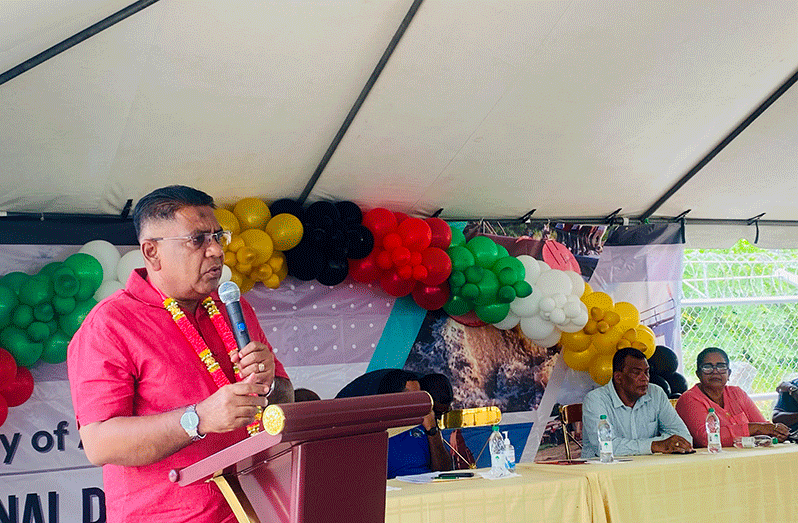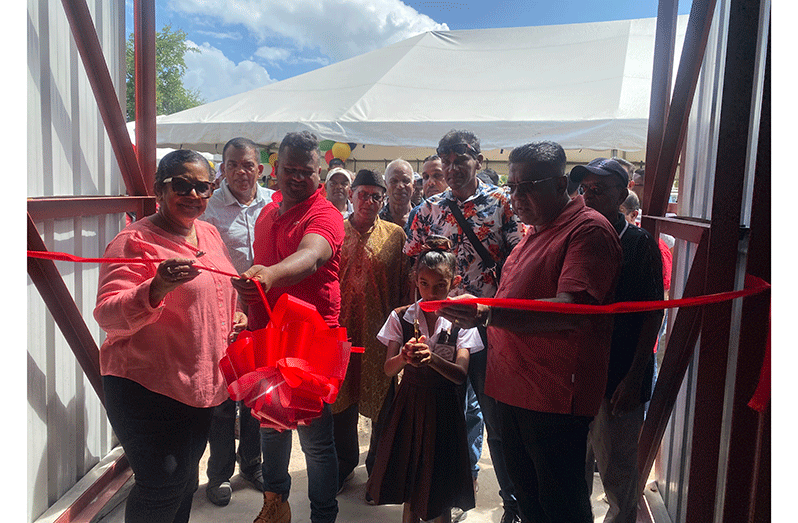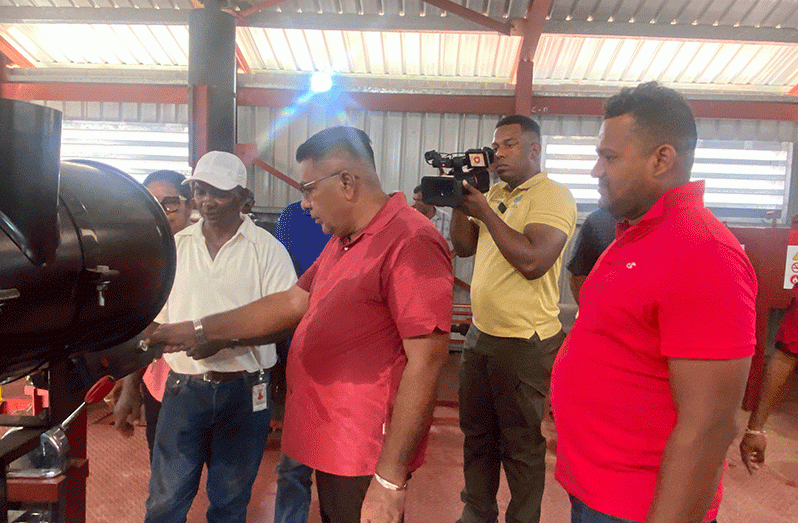–will drain 10,000 acres of farmlands
Over 200 rice and cash crop farmers stand to benefit from the newly commissioned pump station at Andrews on the Essequibo Coast in Region Two (Pomeroon-Supenaam). The rehabilitation project, undertaken by H. Nauth & Sons and supervised by Consultant CB & Associates Inc., was completed at a cost of G$528,050,550.
At the commissioning ceremony held on Saturday at the pump station site, Minister of Agriculture Zulfikar Mustapha emphasized the government’s dedication to fulfilling promises made to the people of Region Two. He described the project as a significant step toward economic development in the region.
“Essequibo is an important area for us. This project symbolizes a commitment to the people of the region by the government. We want you to ply your trade so you can earn,” Mustapha said.
Highlighting the region’s importance, Mustapha noted that over 34,000 acres of land are under rice cultivation in Essequibo.
“Through the partnership between the Ministry of Agriculture and the farmers, there has been an increase in production,” he stated.
He further added, “The Andrews pump station is just one of the projects that will bring tremendous benefits to the people.”
Mustapha disclosed that the Ministry of Agriculture has invested over $5 billion to improve agricultural infrastructure in the region, including efforts to modernize the drainage sector.

“Billions of dollars have been spent to modernize the infrastructure and improve the drainage sector,” he said. The minister also announced plans to commission four more pump stations across the country, adding to the ten stations already commissioned by the National Drainage and Irrigation Authority (NDIA) over the past four years.
Acknowledging farmers’ needs, Mustapha said, “The farmers in the area requested the pump station, and the government has responded to the needs of the people.”
He also revealed plans to allocate funds for upgrading all-weather roads, ensuring better access to farmlands. Urging farmers to make full use of the facility, Mustapha assured, “The government is listening to your needs and working to bring development to your communities.”
Chief Executive Officer of the National Drainage Irrigation Authority (NDIA) Lionel Wordsworth explained that the existing pump station lacked the capacity to efficiently drain the expanding cultivation area, necessitating the upgrade. The improved drainage system will serve an estimated 10,000 acres of farmland, including areas from Evergreen to Westbury, predominantly cultivated with rice and cash crops.
“This represents a programme of drainage work that started in the region, we have built a sluice at Capoey, we have commissioned a pump station at Cozier, and we are installing new pumps at Charity,” Wordsworth said.
The project’s scope involved the installation of one 80-cusec pump in the existing basin, along with two new 100-cusec pumps powered by diesel engines, significantly boosting the station’s drainage capacity. Additionally, a solar-powered operator house has been constructed as part of the project, ensuring sustainability and efficiency. He said that with the effect of climate change, it is important for such a facility. He said investments include the infrastructural work, pumps, a bridge and an operator facility.
Director General of the Ministry of Agriculture, Madanlall Ramraj, reaffirmed the government’s commitment to improving the lives of residents in Andrews by ensuring better drainage systems. He emphasized the administration’s dedication to listening to citizens and delivering solutions to their concerns. Ramraj also highlighted the ongoing transformation in various sectors throughout Region Two.

Regional Chairperson Vilma De Silva expressed heartfelt gratitude on behalf of the Regional Democratic Council (RDC) for the Ministry of Agriculture’s efforts. She noted the government’s unwavering commitment to addressing farmers’ challenges, acknowledging the tremendous improvements facilitated by the National Drainage and Irrigation Authority (NDIA). De Silva emphasized that these changes are significantly improving the lives of farmers and the region’s agricultural output.
This development marks a significant step toward supporting agricultural productivity in Region Two, enhancing farmers’ ability to manage water effectively in their fields.



.jpg)










